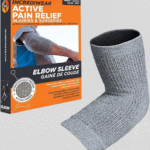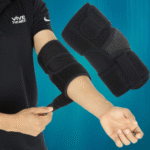A cocked up wrist splint is a type of splint that is used to immobilize the wrist in a cocked-up position. This position is often used to help heal fractures, sprains, and other injuries of the wrist.
The splint is typically made of a hard plastic material and is adjustable to fit the size of the wrist. It is usually worn for a period of 4 to 6 weeks, but the duration of wear will vary depending on the severity of the injury.
If you have a wrist injury, you should talk to your doctor to see if a cocked up wrist splint is right for you.
Benefits of Using Cocked Up Wrist Splint
A cock-up wrist splint is a supportive orthopedic device used to immobilize and stabilize the wrist joint. Its primary design helps alleviate pain, promote healing, and improve wrist function in various conditions. This article will explore the numerous benefits of using a cock-up wrist splint, highlighting its applications in medical treatment and injury recovery.
Immobilization and Stabilization
One of the primary benefits of a cock-up wrist splint is that it immobilizes the wrist joint, providing stability and preventing unwanted movement. This is crucial for patients with wrist injuries, fractures, or surgeries, as it helps to ensure that the affected area remains in a neutral position for optimal healing. Immobilization prevents further damage to the tendons, ligaments, and bones while reducing the risk of additional injury.
The rigid design of the splint maintains the wrist in a slightly extended (cocked-up) position, which is the ideal anatomical position for healing, particularly in conditions like carpal tunnel syndrome or post-surgical recovery.
Pain Relief
Wrist injuries or repetitive strain injuries often cause considerable discomfort, making it difficult to perform everyday tasks. A cock-up wrist splint provides relief from pain by supporting the wrist and reducing strain on injured or inflamed areas. The splint minimizes the stress on the tendons and nerves in the wrist, which can alleviate the pain associated with conditions like arthritis, tendinitis, and carpal tunnel syndrome.
By limiting wrist movements that exacerbate discomfort, the splint helps the patient experience less pain during activities, whether they are at rest or performing light daily tasks.
Promotes Healing in Wrist Injuries
For individuals recovering from wrist fractures, sprains, or surgeries, a cock-up wrist splint promotes healing by immobilizing the wrist in a controlled manner. After an injury, the body needs time to repair tissues and bones. The splint restricts motion to ensure that the wrist remains in a stable, neutral position, which is essential for proper healing. Without adequate immobilization, the affected area could become re-injured or take longer to heal due to repetitive motion or overuse.
Furthermore, for people suffering from repetitive strain injuries or chronic conditions like carpal tunnel syndrome, the splint provides the necessary support to allow the tissues to rest and recover, reducing inflammation over time.
Prevention of Further Injury
By keeping the wrist stabilized and properly aligned, a cock-up wrist splint can prevent further damage or complications, especially during recovery. This is particularly important for individuals with conditions like tendinitis, arthritis, or repetitive strain injuries, where continued movement or improper use of the wrist could aggravate symptoms.
In the case of post-surgery recovery, the splint ensures that the wrist remains in the correct position, which is essential for preventing damage to healing tissues. This preventive benefit can reduce the need for additional medical intervention or prolonged recovery periods.
Improves Functionality and Mobility
While immobilizing the wrist, a cock-up wrist splint does not completely restrict hand function. It is designed to allow movement in the fingers and thumb, so the user can still perform everyday activities, such as typing, writing, or gripping objects. This balance between immobilization and mobility is one of the key advantages of using a cock-up wrist splint.
For individuals with carpal tunnel syndrome, the splint can also help reduce pressure on the median nerve, improving hand functionality by reducing numbness and tingling. By providing support to the wrist, users can perform tasks with greater ease and less discomfort, which is important for maintaining independence in daily life.
Customizable for Comfort
Many cock-up wrist splints are adjustable, allowing users to customize the fit according to their comfort level. The splints are often made from lightweight and breathable materials, ensuring that they can be worn for extended periods without causing discomfort. Some splints also come with removable metal stays or adjustable straps, providing users with the ability to modify the amount of support based on their specific needs.
Customizable features ensure that the splint is both effective in providing immobilization and comfortable enough to wear throughout the day or during sleep. This is particularly beneficial for individuals with chronic wrist conditions that require long-term use of a splint.
Post-Surgical Support
After wrist surgeries, such as carpal tunnel release or fracture repair, patients often need to keep their wrist immobilized to allow the healing process to occur. A cock-up wrist splint is commonly prescribed post-surgery because it provides the necessary support and immobilization to protect the surgical site. It also helps manage post-operative pain by stabilizing the wrist, reducing unnecessary movement, and allowing the tissues to heal properly.
By preventing inadvertent wrist movements during the recovery phase, the splint reduces the risk of complications, such as infections or scar tissue formation, which could lead to poor surgical outcomes.
Cost-Effective and Non-Invasive Treatment
In comparison to other treatments for wrist injuries or conditions, such as surgery or corticosteroid injections, a cock-up wrist splint is a relatively inexpensive and non-invasive option. It can be used in conjunction with other treatments, such as physical therapy or medications, making it a versatile and accessible solution for many patients.
For individuals with mild to moderate wrist pain or injuries, the splint offers a conservative treatment option that may help them avoid more invasive procedures or costly interventions. Additionally, its non-invasive nature makes it suitable for individuals who are unable or unwilling to undergo surgery or other medical procedures.
Top 10 Best Cocked Up Wrist Splint
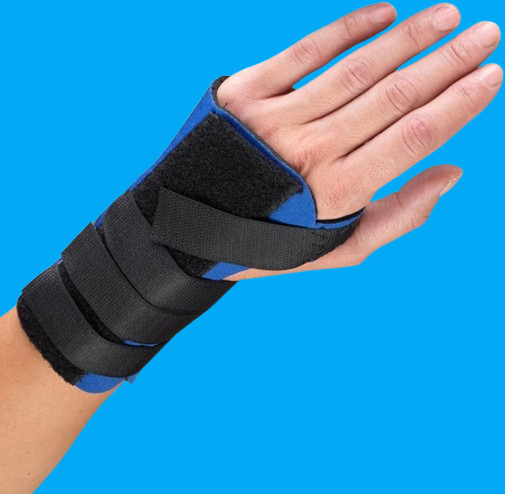
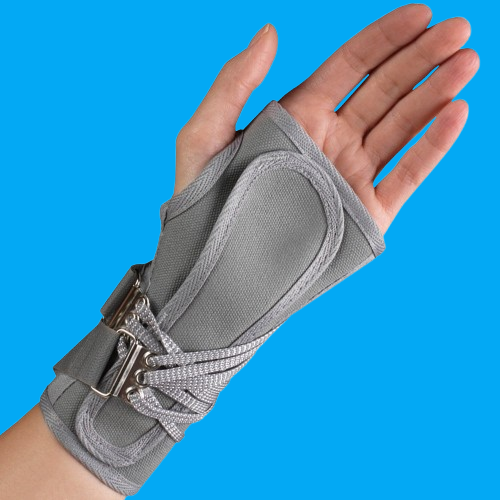
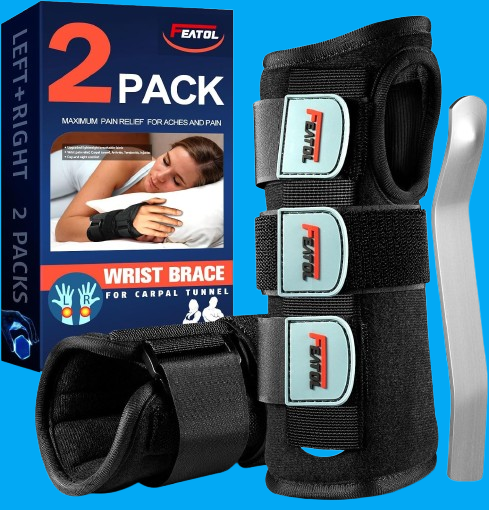
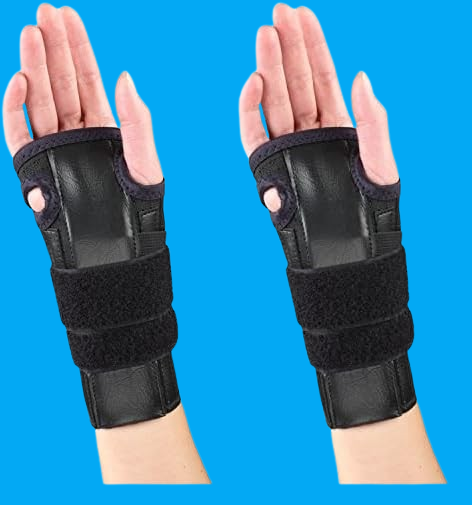
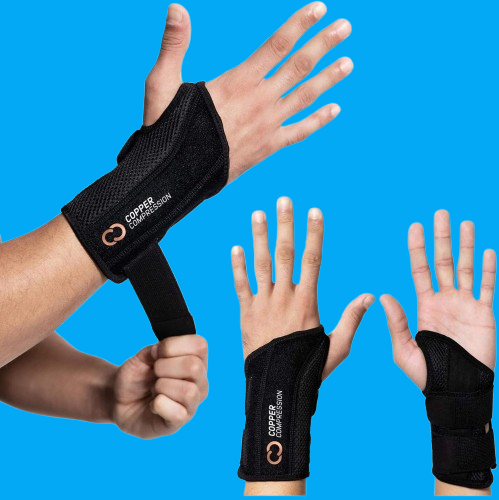
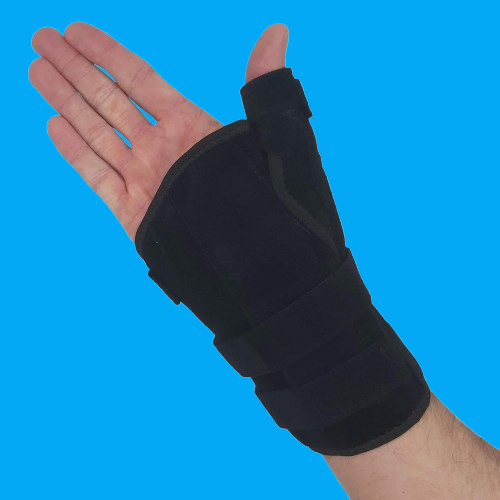
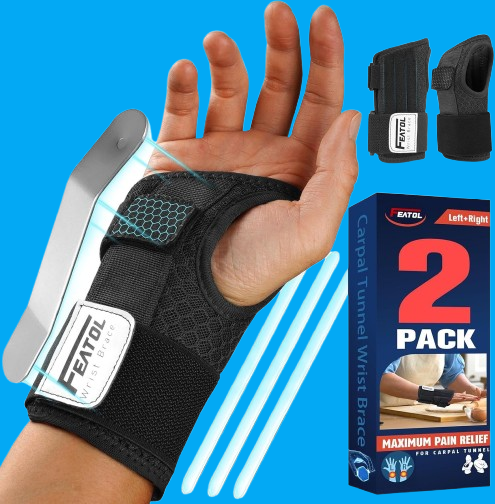
Importance of Using Cocked Up Wrist Splint
A cocked-up wrist splint is a medical device designed to immobilize or support the wrist in a position where it is slightly extended or “cocked up.” It is widely used in managing various wrist conditions, providing therapeutic support, and improving the quality of life for individuals suffering from wrist-related pain or injuries. In this article, we will explore the importance of using a cocked-up wrist splint, its benefits, and the conditions in which it is typically prescribed.
Provides Support and Stability
The primary purpose of a cocked-up wrist splint is to provide support and stabilize the wrist joint. This is crucial in preventing unwanted movements, which can worsen the condition or cause further injury. The wrist is a complex joint with multiple bones, tendons, and ligaments, and when it’s injured, even slight movements can cause pain or delay the healing process. A splint ensures that the wrist remains in a neutral, extended position, which is often the most comfortable and least straining for the injured structures.
For conditions such as carpal tunnel syndrome, where inflammation and compression of the median nerve lead to pain, numbness, and weakness, a cocked-up wrist splint keeps the wrist in an optimal position to reduce pressure on the nerve and promote healing.
Promotes Healing
Immobilization is one of the key principles in treating musculoskeletal injuries. When the wrist is immobilized with a cocked-up wrist splint, the tissues are given the opportunity to heal without further strain. This is particularly important in conditions like tendinitis, sprains, or after surgical interventions. By reducing the movement of tendons and ligaments, the splint aids in reducing inflammation and accelerates the recovery process.
In the case of repetitive strain injuries (RSI), where overuse of the wrist leads to inflammation and pain, immobilizing the wrist allows the affected tendons and muscles to rest and recover. The cocked-up position ensures that the wrist is in a slightly extended position, which is more ergonomic and places less strain on the affected structures.
Reduces Pain
One of the immediate benefits of using a cocked-up wrist splint is pain reduction. Conditions such as arthritis, fractures, or wrist sprains can cause significant discomfort, especially when the wrist is moved. By immobilizing the wrist, the splint limits the movement that typically triggers pain, allowing the patient to engage in daily activities with less discomfort.
For individuals with arthritis, the cocked-up wrist splint helps reduce joint inflammation by keeping the wrist in a neutral position. This can alleviate the chronic pain associated with the condition and improve hand functionality. Moreover, by preventing wrist flexion, which can aggravate pain, the splint helps individuals manage their symptoms more effectively.
Improves Functionality and Enhances Quality of Life
For many people, wrist injuries or conditions like carpal tunnel syndrome and arthritis can significantly limit their ability to perform routine tasks. Simple activities such as typing, cooking, or holding objects can become painful and challenging. By using a cocked-up wrist splint, individuals are able to regain some functionality in their hand and wrist without exacerbating their condition.
The splint stabilizes the wrist, allowing the fingers and thumb to move freely. This enables individuals to perform tasks such as writing, using a keyboard, or grasping objects more easily. In this way, the splint supports patients in maintaining their independence and improving their overall quality of life.
Prevents Further Injury
In addition to treating existing injuries, cocked-up wrist splints are also used as a preventive measure. For individuals involved in activities that place repetitive strain on the wrist, such as typing, sports, or manual labor, wearing a wrist splint can help prevent conditions like tenosynovitis, carpal tunnel syndrome, or wrist sprains.
By stabilizing the wrist and keeping it in an ergonomically favorable position, the splint minimizes the risk of overuse injuries. This is particularly important for athletes, musicians, and workers who rely heavily on wrist movements. The splint acts as a protective barrier, absorbing shock and reducing the chances of further damage.
Supports Post-Surgical Recovery
After wrist surgeries, such as carpal tunnel release or fracture repairs, immobilizing the wrist is a critical part of the recovery process. A cocked-up wrist splint helps protect the surgical site by preventing excessive movement and promoting healing. By keeping the wrist in a slightly extended position, it also helps reduce postoperative swelling and pain.
Furthermore, the splint can be customized to fit the patient’s unique needs, ensuring optimal comfort and support during the recovery period. This helps in faster rehabilitation and reduces the risk of complications such as re-injury or improper healing.
Non-Invasive Treatment Option
The cocked-up wrist splint provides a non-invasive treatment option for many wrist conditions. Instead of resorting to medications or surgeries, individuals can often find relief and support through the use of a wrist splint. This is particularly beneficial for those who prefer to avoid surgery or for conditions that can be effectively managed through immobilization and conservative care.
For instance, in mild cases of carpal tunnel syndrome, where symptoms are not severe, a cocked-up wrist splint worn at night can alleviate symptoms without the need for invasive procedures.
Types of Cocked Up Wrist Splints
Cocked-up wrist splints are designed to immobilize the wrist in a slightly extended position, aiding in the treatment and management of various wrist conditions. There are several types of cocked-up wrist splints, each catering to different needs based on the severity of the condition, level of immobilization required, and patient comfort.
Rigid Cocked-Up Wrist Splints
Rigid splints provide maximum support and immobilization, making them ideal for conditions like fractures, severe sprains, or post-surgical recovery. These splints typically feature a hard outer shell made of plastic or metal and are lined with soft, padded materials for comfort. The rigid structure prevents wrist movement, ensuring optimal healing by maintaining a neutral position.
Soft Cocked-Up Wrist Splints
Soft wrist splints are designed for milder conditions such as tendinitis, carpal tunnel syndrome, or arthritis. They provide moderate support while allowing some degree of movement. Made of breathable, flexible materials like neoprene or fabric, soft splints are more comfortable for prolonged use and can be worn throughout the day. They’re ideal for individuals who need stability but still require some wrist mobility for daily activities.
Custom-Molded Cocked-Up Wrist Splints
Custom-molded splints are tailored to the individual’s wrist shape and size. They are often prescribed for patients with specific needs, such as unique anatomical concerns or complex injuries. These splints provide a more precise fit, offering enhanced support and comfort compared to off-the-shelf versions. Custom splints are usually fabricated by orthopedic specialists using thermoplastic materials.
In summary, the types of cocked-up wrist splints vary in rigidity, materials, and customization, allowing for personalized treatment depending on the patient’s condition and comfort needs.
Advantages of Cocked Up Wrist Splint
cocked up wrist splint offers several benefits for individuals experiencing wrist pain or injury. These advantages make it a common therapeutic tool in managing wrist-related conditions.
Provides Stability and Support: The primary benefit of a cocked-up wrist splint is its ability to immobilize the wrist joint. This reduces unnecessary movements that could worsen the injury, providing essential support to bones, tendons, and ligaments.
Reduces Pain: By keeping the wrist in a slightly extended position, the splint reduces pressure on inflamed or injured structures, leading to significant pain relief. This is especially beneficial in conditions like carpal tunnel syndrome, arthritis, or tendinitis.
Promotes Healing: Immobilization is critical for healing soft tissue injuries. The cocked-up splint allows damaged tissues to rest, facilitating faster recovery from conditions like sprains, fractures, and overuse injuries.
Improves Functionality: Despite immobilizing the wrist, the splint allows finger and thumb movement. This enables patients to perform daily activities, such as typing or grasping objects, without aggravating their wrist condition.
Prevents Further Injury: In addition to treating existing conditions, the cocked-up splint can prevent future injuries by stabilizing the wrist during repetitive activities or heavy use, minimizing strain on vulnerable structures.
Non-Invasive Treatment: The splint offers a non-invasive alternative to surgery or medications, providing relief for conditions that can be managed through immobilization, particularly for individuals seeking conservative treatment options.
Overall, a cocked-up wrist splint is a versatile and effective tool for managing wrist pain, promoting healing, and improving the quality of life for individuals suffering from wrist injuries or disorders.
How to Choose the Cocked Up Wrist Splint?
Choosing the correct cocked-up wrist splint is crucial for ensuring effective treatment and comfort. Here are key factors to consider:
Condition and Purpose
Identify your condition or the reason for using the splint. Different splints offer varying levels of support and immobilization. For example, a lightweight splint may be suitable for mild carpal tunnel syndrome, while a more rigid splint is required for post-surgical recovery or severe arthritis.
Size and Fit
Proper sizing is essential for comfort and efficacy. Splints usually come in small, medium, and large sizes. Measure the circumference of your wrist and compare it to the manufacturer’s size chart. An ill-fitting splint may cause discomfort, reduce circulation, or fail to provide adequate support.
Material
Look for breathable, hypoallergenic materials, especially if you plan to wear the splint for extended periods. Soft, padded splints are more comfortable for long-term wear, while hard splints offer stronger immobilization for serious conditions or post-surgical recovery.
Adjustability
Choose a splint with adjustable straps to allow for customization of fit and pressure. Velcro straps are commonly used and offer easy adjustments, helping to ensure the splint stays securely in place.
Ease of Use
Select a splint that is easy to put on and take off, especially if you have limited dexterity. Some splints are designed to be worn during specific activities, so choose one that fits your lifestyle.
Consult a Professional
Always consult a healthcare provider for recommendations tailored to your specific condition, especially if you are recovering from surgery or managing chronic pain.
By considering these factors, you can choose the right cocked-up wrist splint to promote healing, reduce pain, and enhance comfort.
Features of the Cocked Up Wrist Splint
A cocked-up wrist splint is a specialized orthopedic device designed to provide support, immobilization, and relief for individuals suffering from wrist injuries or conditions. Here are the key features that make it an effective tool in wrist management:
Extended Wrist Position
The defining feature of a cocked-up wrist splint is that it holds the wrist in a slightly extended (or “cocked-up”) position, typically around 15–30 degrees. This position helps alleviate pressure on the median nerve (important for conditions like carpal tunnel syndrome) and reduces strain on tendons and ligaments, promoting healing.
Rigid or Semi-Rigid Support
The splint typically has a rigid or semi-rigid structure, often reinforced with metal or plastic stays. This ensures the wrist remains immobilized, preventing unnecessary or harmful movement that could aggravate the injury.
Adjustable Straps
Most cocked-up wrist splints come with adjustable Velcro straps. These straps allow the user to customize the fit and level of compression, ensuring both comfort and adequate support. The secure fastening keeps the splint in place during daily activities or at night.
Breathable and Comfortable Materials
Comfort is essential for long-term wear. Cocked-up wrist splints are typically made from breathable, lightweight materials such as foam, neoprene, or fabric. These materials allow airflow, reduce sweat build-up, and prevent skin irritation, making the splint more comfortable to wear for extended periods.
Finger and Thumb Mobility
The splint is designed to immobilize the wrist while allowing free movement of the fingers and thumb, ensuring the user can still perform tasks that require dexterity, such as gripping objects or typing.
These features make the cocked-up wrist splint a versatile and effective solution for managing wrist pain, injury, and recovery.
How to Wear and Use a Cocked Up Wrist Splint?
Wearing a cocked-up wrist splint properly is essential for it to provide optimal support and healing. Here’s a step-by-step guide on how to wear and use it effectively:
Position the Splint Correctly
Align the wrist: Place the splint so that your palm rests on the inside surface, with your wrist slightly cocked up or extended. The metal or rigid part of the splint should be underneath the wrist to support it.
Thumb placement: Ensure your thumb fits comfortably in the designated opening, and your fingers are free to move without restriction.
Secure the Straps
Fasten snugly: Start by tightening the straps, typically three, one near the fingers, one in the middle of the wrist, and one near the forearm. Ensure the straps are snug but not too tight, to avoid cutting off circulation.
Check comfort: After fastening, the splint should feel secure without causing pain or excessive pressure.
Adjust for Comfort
Custom fit: If the splint feels too tight or loose, readjust the straps accordingly. You should feel supported but able to move your fingers freely.
Wear as Directed
Day or night use: Follow your doctor’s instructions regarding how long to wear the splint. For conditions like carpal tunnel syndrome, the splint is often worn at night, while for injuries, it may be used during the day for added support.
Avoid overuse: Prolonged use without medical advice can lead to stiffness or weakening of wrist muscles.
By wearing the cocked-up wrist splint properly, you ensure that your wrist is protected, supported, and on the path to recovery.
How to Care for Your Cocked Up Wrist Splint?
Caring for your cocked-up wrist splint is essential to ensure its longevity and effectiveness in supporting your wrist. Regular maintenance keeps the splint in good condition and helps maintain hygiene, as these devices often come into contact with sweat, dirt, and oils from your skin.
First, keep the splint clean by wiping it regularly with a damp cloth. Most splints are made from materials like foam, plastic, and fabric, which can be gently cleaned with mild soap and water. Avoid submerging the entire splint in water, as this can cause damage to any metal or Velcro components. After wiping it down, let the splint air dry completely before wearing it again. Do not use a hair dryer or other heat sources to dry the splint, as this can warp the materials.
If your splint comes with removable padding or fabric covers, remove and hand wash them frequently. Use mild detergent and cold water, then let them air dry before reattaching them to the splint. This helps prevent the buildup of bacteria and odors.
Check your splint regularly for signs of wear and tear, such as frayed straps, bent metal, or damaged Velcro. If any parts are worn out or no longer function correctly, consult your healthcare provider for repairs or replacement. Continuing to use a damaged splint can reduce its effectiveness and potentially worsen your wrist condition.
Lastly, store the splint in a cool, dry place when not in use. Avoid leaving it in direct sunlight or humid areas, as these conditions can degrade the materials over time. Proper care will ensure your splint remains comfortable, clean, and functional for as long as you need it.
Source: Amazon , Dynamic Techno Medicals , BraceAbility , Restorative Medical










![FREETOO Wrist Brace for Carpal Tunnel,[New Upgrade-Anatomically shaped] Adjustable Wrist Support Splint for Men and Women,Hand Brace for Pain Relief, Tendinitis,Arthritis,Right Hand,Medium](https://m.media-amazon.com/images/I/41NA1EJkUdL._SL160_.jpg)










